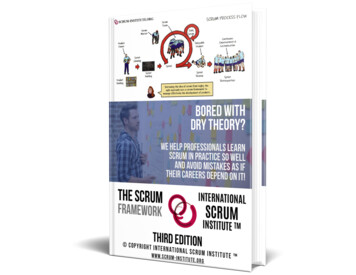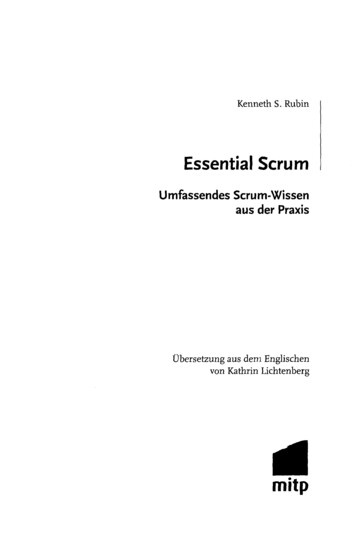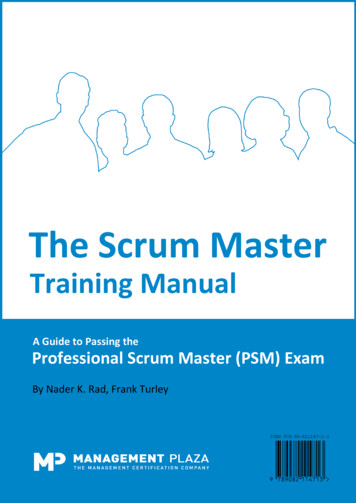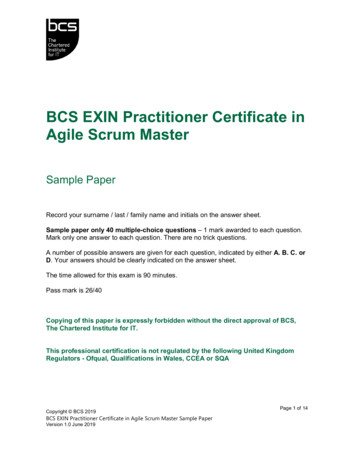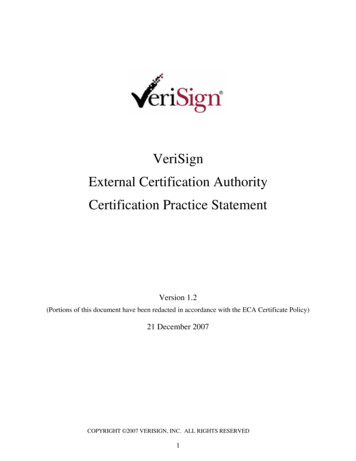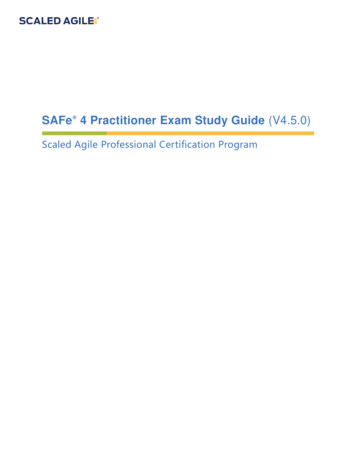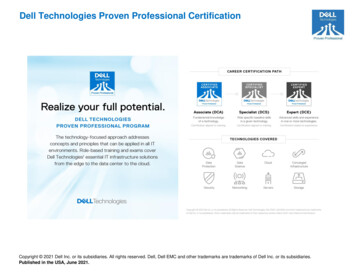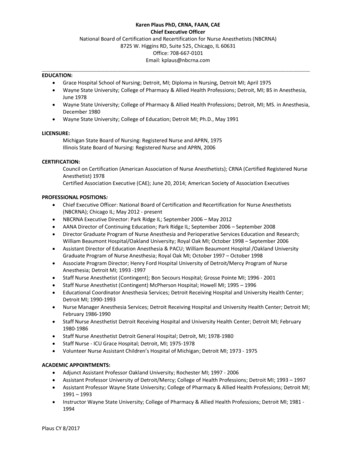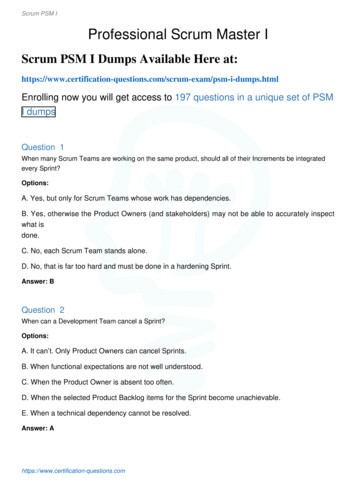
Transcription
Scrum PSM IProfessional Scrum Master IScrum PSM I Dumps Available Here xam/psm-i-dumps.htmlEnrolling now you will get access to 197 questions in a unique set of PSMI dumpsQuestion 1When many Scrum Teams are working on the same product, should all of their Increments be integratedevery Sprint?Options:A. Yes, but only for Scrum Teams whose work has dependencies.B. Yes, otherwise the Product Owners (and stakeholders) may not be able to accurately inspectwhat isdone.C. No, each Scrum Team stands alone.D. No, that is far too hard and must be done in a hardening Sprint.Answer: BQuestion 2When can a Development Team cancel a Sprint?Options:A. It can’t. Only Product Owners can cancel Sprints.B. When functional expectations are not well understood.C. When the Product Owner is absent too often.D. When the selected Product Backlog items for the Sprint become unachievable.E. When a technical dependency cannot be resolved.Answer: Ahttps://www.certification-questions.com
Scrum PSM IQuestion 3Which output from Sprint Planning provides the Development Team with a target and overarching directionfor the Sprint?Options:A. The Sprint Backlog.B. The Sprint GoalC. The release plan.D. Sprint Review minutes.Answer: BQuestion 4How should a Development Team deal with non-functional requirements?Options:A. Ensure every Increment meets them.B. Make sure the release department understands these requirements, but it is not theDevelopmentTeam’s responsibility.C. Handle them during the Integration Sprint preceding the Release Sprint.D. Assign them to the lead developers on the team.Answer: AQuestion 5When is a Sprint over?Options:A. When the Product Owner says it is done.B. When all Product Backlog items meet their definition of "Done”.C. When all the tasks are completed.D. When the time-box expires.Answer: Dhttps://www.certification-questions.com
Scrum PSM IQuestion 6Scrum has a role called "Project Manager”.Options:A. TrueB. FalseAnswer: BQuestion 7What are two good ways for the Development Team to make non-functional requirements visible? (Choosetwo.)Options:A. Put them on a separate list on the Scrum board, available for all to see.B. Add them to the Product Backlog and keep the Product Owner posted on the expected effort.C. Run the integration and regression tests before the end of the Sprint, and capture the openwork for theSprint Backlog of the next Sprint.D. Add them to the definition of "Done” so the work is taken care of every Sprint.Answer: B, DQuestion 8How much time is required after a Sprint to prepare for the next Sprint?Options:A. The break between Sprints is time-boxed to 1 week for 30 day Sprints, and usually less forshortersprints.B. Enough time for the requirements for the next Sprint to be determined and documented.C. Enough time for the Development team to finish the testing from the last Sprint.D. None. A new Sprint starts immediately following the end of the previous Sprint.E. All of the above are allowed depending on the situation.Answer: Dhttps://www.certification-questions.com
Scrum PSM IQuestion 9In the Sprint Planning meeting, the Product Owner and the Development Team were unable to reach aclear understanding about the highest order Product Backlog items. Because of this, the DevelopmentTeam couldn’t figure out how many Product Backlog items it could forecast for the upcoming Sprint. Theywere able to agree on a Sprint Goal, however.Which of the following two actions should the Scrum Master support? (Choose two.)Options:A. Cancel the Sprint. Send the entire team to an advanced Scrum training and then start a newSprint.B. Forecast the most likely Product Backlog items to meet the goal and create a Sprint Backlogbased on alikely initial design and plan. Once the time-box for the Sprint Planning meeting is over, start theSprintand continue to analyze, decompose, and create additional functionality during the Sprint.C. Continue the Sprint Planning meeting past its time-box until an adequate number of ProductBacklogitems are well enough understood for the Development Team to make a complete forecast. Thenstartthe Sprint.D. Discuss in the upcoming Sprint Retrospective why this happened and what changes will make itlesslikely to recur.E. Ask everyone to take as much time as needed to analyze the Product Backlog first, and thenreconveneanother Sprint Planning meeting.Answer: B, DQuestion 10Which answer best describes the topics covered in Sprint Planning?Options:A. What to do and who will do it.B. How conditions have changed and how the Product Backlog should evolve.C. What can be done and how to do it.D. What went wrong in the last Sprint and what to do differently this Sprint.https://www.certification-questions.com
Scrum PSM IE. Who is on the team and what team member roles will be.Answer: CWould you like to see more? Don't miss our PSM I PDFfile ns.com
When many Scrum Teams are working on the same product, should all of their Increments be integrated every Sprint? Options: A. Yes, but only for Scrum Teams whose work has dependencies. B. Yes, otherwise the Product Owners (and stakeholders) may not be able to accurately inspect what is done. C. No, each Scrum Team stands alone. D. No, that is .

